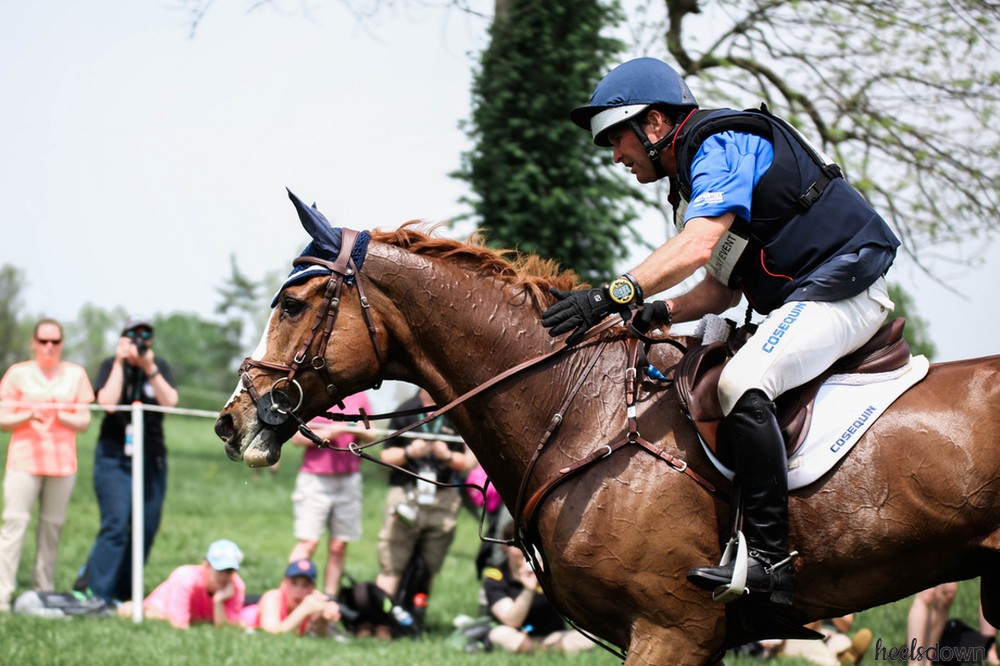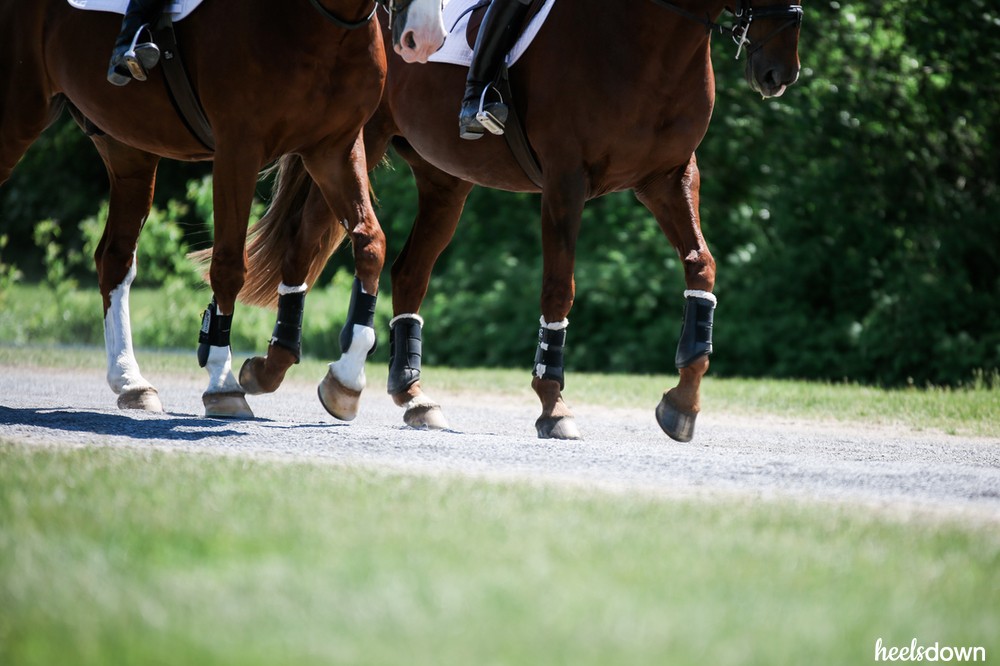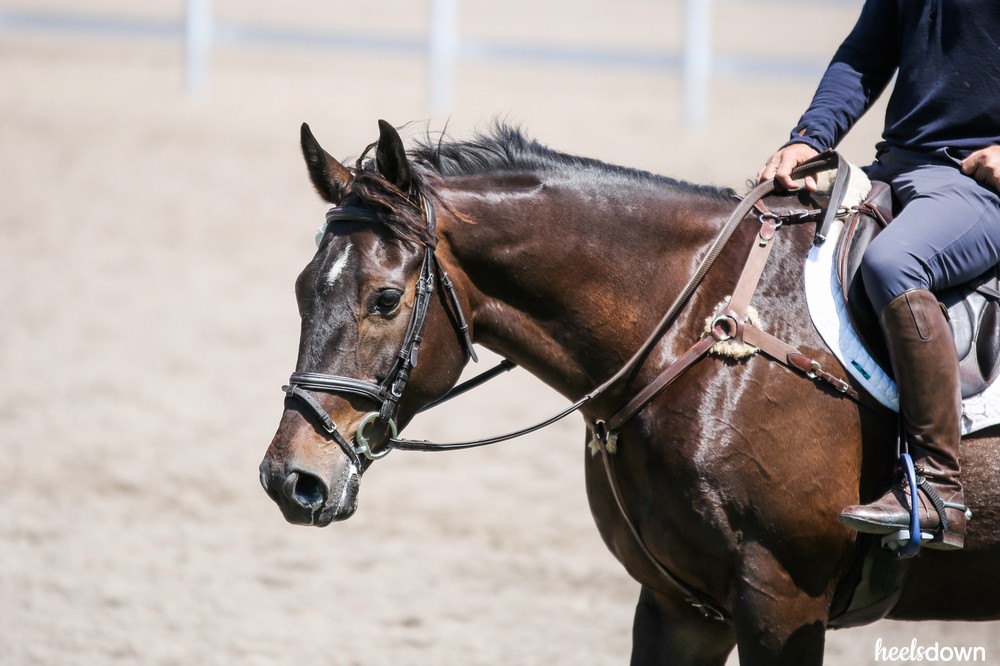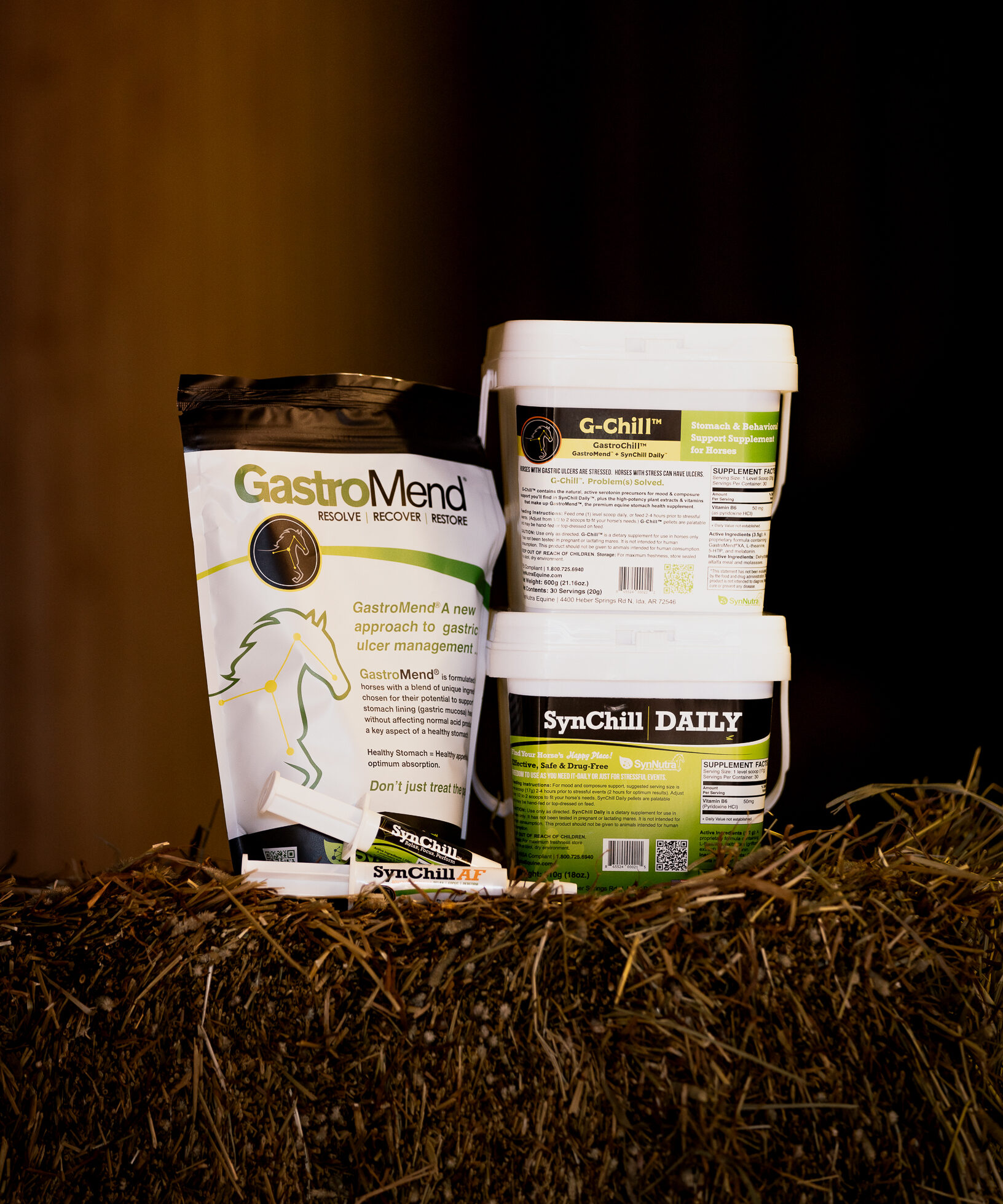Ultimate Strength and Conditioning Guide for Horses: Eventing

Eventing places high physical demands on a horse, especially during the high rates of speed galloping on cross-country courses. If horses aren’t properly conditioned, it’s possible to see more soft-tissue injuries, particularly to the lower extremities. Tendons, suspensories and digital flexor tendons are some of the areas most affected, said veteran eventer, Jim Wofford.
“There is a fair amount of stress on the horse. A lot of horses are capable of doing it, but they have to be carefully prepared,” he says. “As the speed goes up, the risk goes up of injury to the horse. It’s often (due to) the fact that the horse’s muscles have not been prepared carefully enough. And as the horse gets tired, the muscles no longer support the system. That’s when you start to stretch and strain the tendons and ligaments.”
Heels Down Mag spoke to experts in the three Olympic disciplines – dressage, show jumping and eventing – on how to keep horses happy, sound and physically conditioned. For this second part of the series on strength and conditioning programs for horses, we spoke to the legendary Jim Wofford, Olympic eventer and Pan Am Games gold medalist.
When and How to Begin
Jim prefers to begin conditioning a horse 90 days before an event. The initial work begins at the walk, using hills to develop the horse’s galloping and jumping muscles in a low-impact way.
Like This Story? Try: The Ultimate Strength And Conditioning Guide For Show Jumping
“I’ve never broken a horse down at the walk. When you think about it, the gallop is a four-beat movement with the horse, and the walk is a four-beat movement. So when you’re walking, you’re galloping in super slow motion,” Jim said.
Aside from walking, the amount of daily work depends on the horse’s history and how far into the program he is. “A thirty-minute session of show jumping might not be sufficient before a major competition. But a thirty-minute session for a horse that’s just coming back into work might actually break him down,” he explained.

The level of care needed throughout a conditioning program is truly an individual assessment; some horses need a great deal, and some not much at all. His philosophy is to not make regular use of standing wraps and other therapies, to avoid the horse relying on them for support. But using them close to the competition makes it more beneficial. “Whereas if the horse has become accustomed to them all along, you really have nowhere left that you can go legally,” Jim says.
How to Tell if Your Horse Is Fit
Jim thinks that appearances can lie when it comes to judging fitness, as sometimes you see a horse who looks like he’s carrying slightly too little or too much weight, yet earn the best-conditioned award at competitions. He judges his own horses’ fitness based on doing a certain amount of work on his regular gallop track right before an event, and suggests a similar general gauge might work for others as well.
Are You Overworking Your Horse?
If a horse isn’t tolerating its current workload, back off the heavy routine for a while. Jim says the best barometer to gauge a horse’s ability is his appetite. If he skips breakfast and feels lethargic when you hop on, that’s a day to just walk.
“The next day he’ll come out and be bright as a new penny. But you’re about to put that horse over the top. It’s more in their attitude and appetite at first rather than their lower extremities. Those are next,” Jim described.
Read This Next: Why Are Event Horses So Skinny?
A rider should never put a horse in a position where he’s running harder than he’s conditioned for.
“If he gets tired at the halfway mark (in a cross country course) you have to pull up. If he gets tired three fences from home, you have to slow down,” Jim said.
He reiterated that a rider really should know his horse isn’t fit enough before a competition. This is why it’s so important to start preparations early – and slowly.

“That’s your best defense against injury. That’s your best defense against fatigue: long-term preparation. Not just going to competitions and using the competition to get them fit. I think that’s a prescription for injury to the horse,” Jim explained.
The Eventing Plan
Jim does his training and conditioning in five-day rotations, per the general schedule below. Hacking is done at the walk on a long rein. When doing canter/gallop sets, Jim prefers to canter up hills rather than gallop on the flat because of risk and increased concussion – as he says, “speed kills.”
After a gallop, horses should be huffing for air for about seven minutes. If the horse is not meeting that benchmark, adjust the workouts accordingly. Thirty days before a competition, assess fitness, and also work backwards from the event schedule to determine the rest of the plan. For example, if a rider plans to do cross-country on the Saturday of the competition, the Monday before should be the last gallop. Then work backwards in the five-day rotations to see what workouts should fall on which days. But, adjust based on the horse’s needs.
“Some horses will show jump, and their dressage will be better the next day. Some horses, on day three they will be a little snarky and get a mild buzz off jumping and carry forward. I’ll notice that and will tend to work on figures and patterns and accuracy on day one, and day three work on suppling and flexibility rather than compression and accuracy. Once I ship to the destination event, I will use that knowledge to my horse and rider’s benefit. If I have a horse that lights up after show jumping, he won’t do that a week before the event.”
To begin the initial trot work for conditioning, go for five minutes for each of three sets, with a walk break in between each set. For hacking, Jim typically hacks one-star horses one hour per day, two-star horses for 1.5 hours, and four-star horses for two hours per day.
Jim Wofford Schedule to Maintain Peak Fitness:
He sticks to the basics.
Day One: Hack and dressage.
Day Two: Hack and show jump.
Day Three: Hack and dressage.
Day Four: Start with 15-20 minute walk, a trot warm-up and canter/gallop conditioning, depending on the horse’s level of fitness.
Day Five: Hack.


